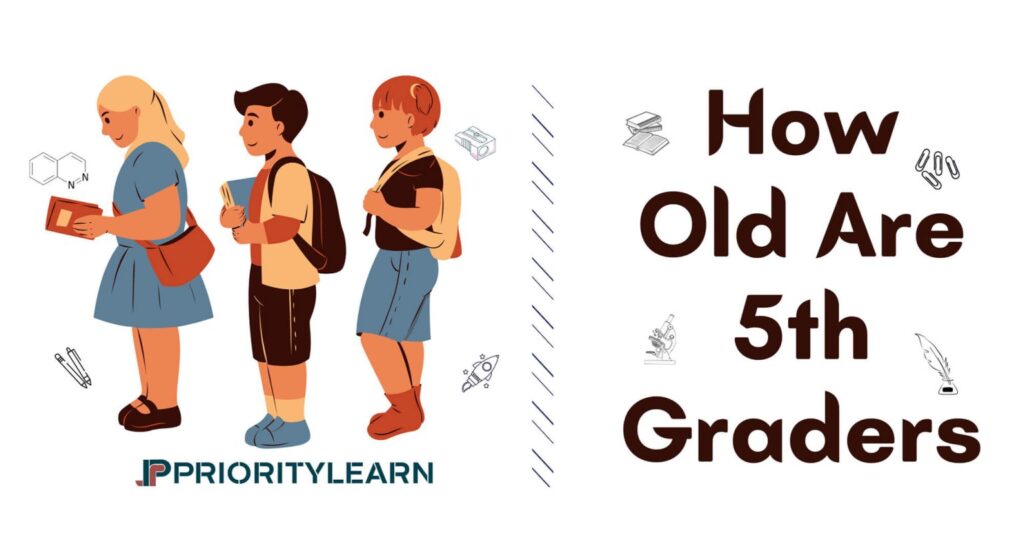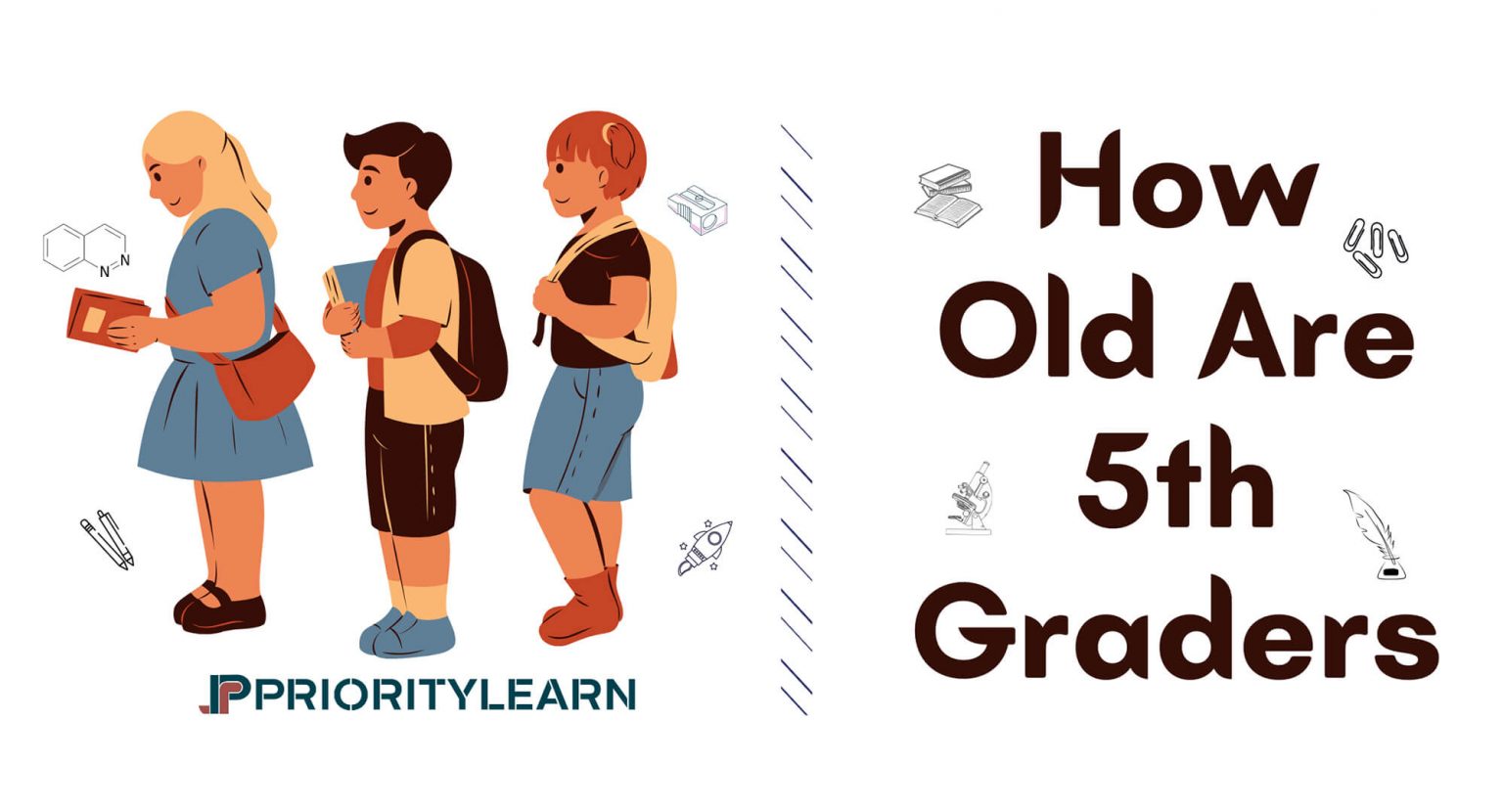
What Age Is 5th Grade? Understanding the Age Range for Fifth Graders
Navigating the American education system can sometimes feel like a maze, especially when trying to pinpoint the specific age of children in each grade. One common question parents and educators often ask is: What age is 5th grade? Understanding the typical age range for fifth graders is crucial for ensuring children are developmentally on track and receiving the appropriate educational support. This article will delve into the typical age of a 5th grade student, factors that can influence this age, and the significance of understanding these age ranges.
Typical Age Range for 5th Grade Students
Generally, students in 5th grade are between the ages of 10 and 11 years old. This age range is based on the standard progression through the American school system, where children typically begin kindergarten at age 5 and advance one grade per year. Therefore, by the time a student reaches 5th grade, they have usually completed kindergarten, 1st grade, 2nd grade, 3rd grade, and 4th grade.
To further clarify, the academic year usually starts in late August or early September, and ends in late May or early June. So, a child who is 10 years old at the start of the school year would typically be in 5th grade. They would then turn 11 sometime during that school year. Similarly, a child who turns 10 shortly after the school year begins would also be in 5th grade for that academic year.
Factors Influencing the Age of 5th Graders
While the 10-11 age range is the most common, several factors can influence the actual age of a student in 5th grade. These factors include:
- Birthdate: As mentioned earlier, a student’s birthdate relative to the school year’s start date plays a significant role. Children born in the late summer or early fall may be slightly younger than their peers.
- Early Entrance to Kindergarten: Some states and school districts allow children to enter kindergarten early if they meet certain criteria. This can result in a student being younger than the typical age for their grade level.
- Grade Retention: Conversely, a student who has been held back or retained in a previous grade will be older than their peers in 5th grade. Grade retention is often considered when a student is not meeting academic standards or demonstrating sufficient maturity.
- Gifted Programs and Acceleration: Some students may be accelerated through the grades due to exceptional academic abilities. This can result in a younger student being placed in 5th grade.
- Transfer Students: Students transferring from different school districts, states, or countries may have varying academic backgrounds and ages relative to their grade level.
The Significance of Understanding Age Ranges
Knowing the typical age range for 5th grade is important for several reasons:
- Developmental Appropriateness: Understanding the typical age helps educators and parents ensure that the curriculum and learning activities are developmentally appropriate for the students. What is suitable for a 10-year-old may not be suitable for a 12-year-old, and vice versa.
- Social and Emotional Development: Age can influence a child’s social and emotional development. Being aware of the age range helps educators and parents support students in their social interactions and emotional well-being.
- Academic Expectations: Knowing the age range can help set appropriate academic expectations. Educators can tailor their teaching methods and strategies to meet the needs of students within the typical age range.
- Identifying Potential Issues: If a student is significantly older or younger than their peers, it may indicate underlying issues such as learning disabilities, social challenges, or academic giftedness. Early identification of these issues can lead to timely intervention and support.
- College Planning: While it seems far off, the age a student is in 5th grade can subtly influence their trajectory towards college. Understanding grade progression helps in long-term educational planning.
The 5th Grade Curriculum: What to Expect
5th grade is a pivotal year in elementary school, often marking the transition to more complex academic concepts and greater independence. The curriculum typically covers a range of subjects designed to build upon previous knowledge and prepare students for middle school. Here’s what you can generally expect:
Language Arts
In language arts, 5th grade students focus on improving their reading comprehension, writing skills, and vocabulary. They often read longer and more challenging texts, analyze characters and themes, and learn to write persuasive essays and research reports. Grammar and punctuation are also emphasized to refine their writing abilities. Students will likely encounter classic literature and be encouraged to develop their own writing styles.
Mathematics
Mathematics in 5th grade typically involves mastering fractions, decimals, and percentages. Students learn to perform operations with these numbers and apply them to real-world problems. They also delve into geometry, exploring shapes, angles, and measurements. Algebra concepts, such as variables and equations, may be introduced to lay the foundation for future math courses. Problem-solving and critical thinking skills are heavily emphasized.
Science
The science curriculum in 5th grade often covers topics such as physical science, life science, and earth science. Students may learn about the properties of matter, energy, ecosystems, and the solar system. Hands-on experiments and projects are common to engage students and make learning more interactive. The scientific method is also a key component, teaching students how to ask questions, form hypotheses, and analyze data.
Social Studies
Social studies in 5th grade typically focuses on American history, geography, and civics. Students may learn about the early explorers, the American Revolution, and the Civil War. They also study different regions of the United States, their cultures, and their economies. Understanding the principles of democracy and the roles of citizens in a society is another important aspect of the curriculum. Map reading and research skills are also developed.
Addressing Concerns About Age Discrepancies
It’s not uncommon for parents to have concerns if their child is significantly older or younger than their classmates. Here are some ways to address these concerns:
- Communicate with the School: Talk to your child’s teacher and school counselor to discuss your concerns. They can provide insights into your child’s academic and social progress and offer suggestions for support.
- Assess Academic Needs: Determine if your child’s academic needs are being met. If they are advanced, consider enrichment activities or gifted programs. If they are struggling, explore tutoring or other interventions.
- Address Social and Emotional Needs: Pay attention to your child’s social and emotional well-being. Ensure they have opportunities to interact with peers and develop healthy relationships. If they are experiencing social challenges, seek support from a counselor or therapist.
- Advocate for Your Child: Be an advocate for your child’s needs. Work with the school to create a plan that supports their academic, social, and emotional development.
Conclusion
In summary, the typical age for students in 5th grade is between 10 and 11 years old. However, various factors can influence this age, including birthdate, early entrance to kindergarten, grade retention, and academic acceleration. Understanding the age range for 5th grade is crucial for ensuring that students receive developmentally appropriate education and support. By being aware of these factors and addressing any concerns, parents and educators can help 5th grade students thrive academically, socially, and emotionally. Remembering that each child develops at their own pace is essential for fostering a positive and supportive learning environment. The journey through 5th grade is a significant step toward future academic success, and understanding the nuances of age and development can make all the difference. As students navigate their way through fractions, persuasive essays, and American history, knowing their age within the context of their grade level can provide valuable insights for educators and parents alike. The focus should always remain on providing a nurturing environment where every child can reach their full potential. What age is 5th grade? It’s more than just a number; it’s a marker of development and growth. [See also: Understanding Child Development Stages] [See also: How to Support Your Child’s Education] [See also: Tips for Parents of Fifth Graders] [See also: The Importance of Social Skills in Elementary School]

